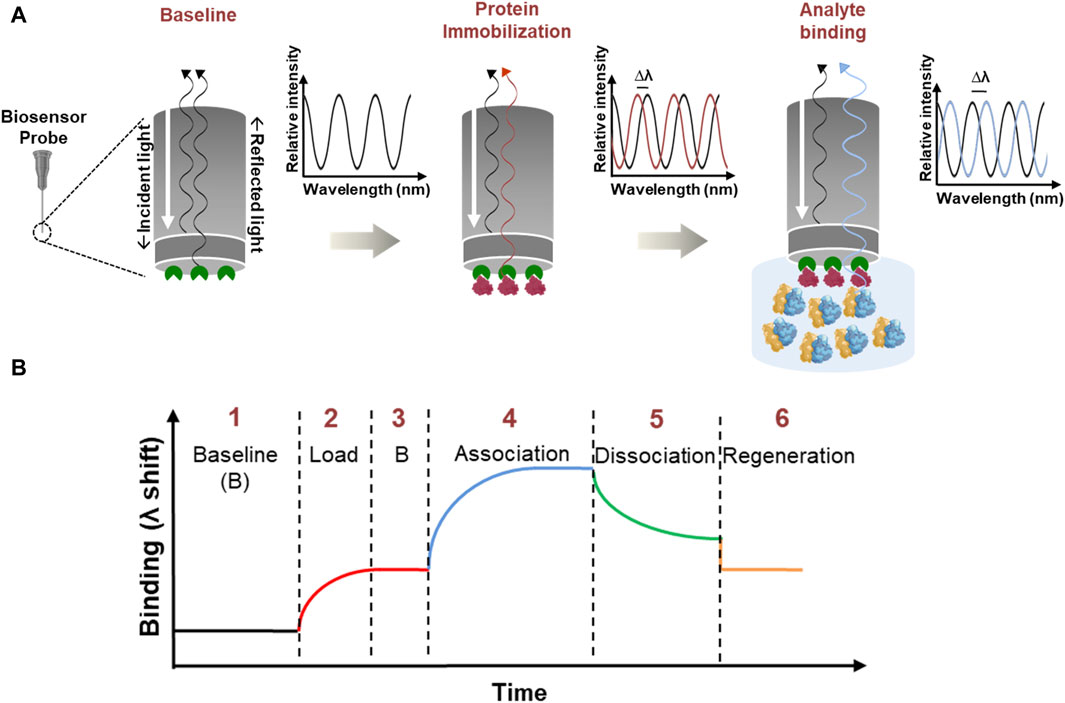Biolayer Interferometry (BLI) Service
- Provide essential sample information such as concentration ranges, buffer composition, and molecular features.
- Ensure samples are free from particulates or strong interfering agents to minimize background signals.
- For unstable or aggregation-prone molecules, consult with us to design optimized buffer systems.
- Prepare sufficient sample quantities to allow replicates and control assays.
Biolayer Interferometry (BLI) is a powerful, label-free optical technique for real-time monitoring of molecular interactions. It provides detailed binding affinity and kinetic parameters, enabling precise measurement of protein–protein, protein–nucleic acid, protein–small molecule, and protein–lipid interactions. With its simplicity, speed, and robustness across diverse conditions, BLI has become a key tool in both fundamental research and applied drug development.
MtoZ Biolabs offers Biolayer Interferometry (BLI) Service delivering precise molecular interaction analysis with state-of-the-art instrumentation and an expert scientific team. Our service supports academic research, drug discovery, and translational applications by providing accurate kinetic and affinity data.
Technical Principles
Biolayer Interferometry (BLI) utilizes a biosensor probe coated with biomolecules. When analytes bind or dissociate, the biological layer on the sensor surface changes in thickness, causing a measurable shift in the interference signal. This shift directly reflects binding events, while factors such as refractive index or flow variation do not interfere with the measurement. By recording the signal in real time, BLI determines the association rate constant (ka), dissociation rate constant (kd), and equilibrium dissociation constant (KD), providing reliable kinetic and affinity insights.

Pandiarajan, I. et al. Front. Mol. Biosci. 2024.
Figure 1. Illustration of Bio-Layer Interferometry
Analysis Workflow
1. Sensor Selection and Ligand Immobilization
Based on sample type and molecular properties, we select appropriate biosensors such as SA, SSA, AR2G, or AHC. Ligand molecules are then immobilized to ensure stable and specific binding.
2. Real-time Interaction Monitoring
The biosensor is introduced into analyte solutions, and the system continuously tracks association and dissociation processes with high sensitivity.
3. Data Collection and Kinetic Profiling
Complete binding curves are generated, capturing the full interaction profile across multiple concentrations.
4. Curve Fitting and Parameter Estimation
Professional software is applied to analyze curves and calculate quantitative values including ka, kd, and KD.
5. Quality Assurance and Validation
Replicate experiments and control assays are performed to confirm the accuracy, reproducibility, and reliability of the data.
6. Comprehensive Reporting
Clients receive detailed reports including binding curves, kinetic data, and expert interpretation to support downstream applications.
Sample Submission Suggestions
Biolayer Interferometry (BLI) Service is compatible with a wide range of biomolecules including purified proteins, antibodies, receptors, nucleic acids, small molecules, and complex biological fluids such as serum or plasma. To achieve optimal results, MtoZ Biolabs recommends:
MtoZ Biolabs supplies clients with a complete sample submission guide, ensuring smooth and efficient project execution.
Why Choose MtoZ Biolabs?
✅ Real-time Kinetic Analysis: Capture association and dissociation processes dynamically to obtain accurate binding constants.
✅ High-throughput Performance: Process multiple samples simultaneously, significantly reducing analysis time and increasing productivity.
✅ Low Sample Consumption: Only small amounts of material are required, making the method suitable for scarce or precious samples.
✅ Broad Application Flexibility: Effective in complex buffers and diverse biological matrices, enabling reliable results in various experimental contexts.
✅ One-Time-Charge: Our pricing is transparent, no hidden fees or additional costs.
MtoZ Biolabs’ Biolayer Interferometry (BLI) Service delivers efficient, accurate, and reproducible molecular interaction analysis. With state-of-the-art platforms and expert scientists, we provide reliable data and in-depth insights to advance your research and development. Contact us today for tailored solutions.
FAQ
Q1: What types of molecular interactions can BLI analyze?
BLI measures protein–protein, protein–nucleic acid, protein–small molecule, and protein–lipid interactions, making it valuable in both drug discovery and basic biology.
Q2: How do different sensor types compare?
Sensor types such as SA, AHC, and SSA serve distinct immobilization strategies. SA is ideal for biotinylated samples, AHC for antibodies, and SSA for small molecules. We select the optimal sensor according to your project.
Q3: What is the difference between BLI and SPR?
BLI uses interference signal shifts, offering simple operation, fast detection, and high-throughput capability, while being insensitive to flow and refractive index changes. SPR is based on plasmon resonance, offering higher sensitivity for low-molecular-weight analytes. MtoZ Biolabs can advise on the most appropriate method based on your research goals.
Related Services
How to order?







